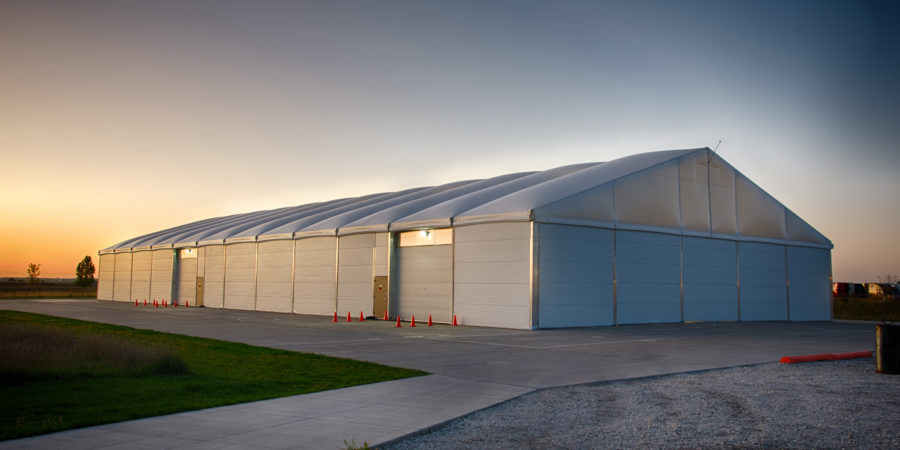A Complete Guide To Have A Profit-making Warehouse Layout
Top Tips On Layout For Warehouses
The importance associated with the design layout of a warehouse is a lot more in-depth. The way a warehouse is managed affects storage capacity, ease-of-access, and employee productivity. A design layout for a warehouse that is either poorly or improperly planned fails to make use of the available space or it could be taking up unnecessary space. Here are a few tips to make the most out of the layout of a warehouse.

1. Reassess Your Design
Regardless of how well organized you might be, whether your sales for the company continue to increase year on year, at some stage your warehouse will need a new layout design or you may even need to relocate to a new warehouse. It is suggested that you evaluate this space every 3 to 5 years, which will also depend on how quickly your sales are increasing for your company. As your sales continue to increase each year, this usually means that the existing space will require revisiting over time.
2. Do Away With Traffic Barriers
This tip may appear to be a more obvious requirement, but it is vital to make sure that your main traffic areas are kept clear at all times. It is easy to get into the habit of delaying unpacking items or organizing your old and used shipping boxes, but when you are constantly stacking barriers that are now stopping you from fulfilling your orders, it can result in a significant backup. Nobody enjoys a rush-hour traffic block. Make sure your employees are able to perform their roles by releasing them from those stock rooms which have become immobile.
3. Outline Your Orders
Your SKUs that are the most popular will probably change with each season. It is a good idea to re-slot the warehouse in order to match up to the needs of your existing business model. You should be reviewing your set-up every 6 months to a year. This will make sure that all your “A” SKUs are always in the right physical location and storage media, which will lower unnecessary travel when it comes to the order pickers that you use. Your WMS ( warehouse management system), should feature a “slotting” module that is dynamic.
4. Make The Most Of Your Available Space
Instead of expanding the existing footprint of the warehouse, think about using vertical space. The addition of storage units that are taller along with the correct equipment to store and pick up your materials can assist you in storing more in the same space, instead of having to add to the expansion costs. You can also consider the variety and the type of shelving that you use. Storing items that are smaller on a pallet rack not only wastes space but also increases the likelihood of misplacing items. Instead of using one type of rack throughout the warehouse, it may be a better option to make use of different shelving types to accommodate different materials.
5. Use Your Space Correctly
Underutilized or poorly used spaces is one of the more common occurrences in warehouses and this is non-exclusive when it comes to the storage conditions or inventory type in these warehouses.
The traditional warehouses were equipped and built to deal with projected volumes, limited loads of units, and a set product number. They are then supposed to adapt to the demands of customers and become more efficient as time goes by. In order to achieve these conflicting goals, many warehouses are known for accepting the long-term penalties in order to realize the short-term goals such as creating floor-ready customized merchandise for the end-cap displays, creating loads that are mixed, or hand-pricing merchandise for important customers in order to streamline customer processing when the goods are traditionally shipped in full-pallet quantities or full cases.
6. Create Zones According To The Pick-Up
Split your facility into zones according to the pick types. This will simplify order resetting and picking as items that are similar that have similar storage needs and the picking methods will be grouped together.
7. Implement Organized Workstations
The OSHA (Occupational Safety and Health Administration) has reported that musculoskeletal disorders like tendonitis, carpal tunnel syndrome, and injuries to the lower back are a leading cause of illnesses and injuries in the workplace. To lower the risks associated with these injuries in manual and repetitive tasks, it becomes important to plan workstations so that they match up to the specific tasks of these workers. In this way, you also maximize the ergonomic benefits along with propelling greater productivity and efficiency in the workplace.
8. Track Your Results & Improve Organization In Your Warehouse
Businesses are expecting a lot more when it comes to their distribution center and warehouse operations. Real-time order status, task statuses, and visibility of the inventory in a warehouse have become the norm. Increasing your use of the latest technology will offer you a clearer view, improved metrics, better productivity, and improved warehouse data. Planning your warehouse along with changing the equipment to make the most from your existing production space allows for a way to increase your sales while keeping your inventory onsite. Developing cross-functional and cross-trained teams introduces flexibility when it comes to reacting to fluctuations that occur in both seasonal and traditional businesses. When you are able to measure your results, execute changes, and analyze your data, you are creating a warehouse that is far more efficient.
9. Categorize Your Inventory
How accurately your inventory needs to be categorized will depend on a variety of different factors. The more important features to keep in mind include the weight and size of your stored goods, and how quickly or slowly these goods are retrieved. It is important to review all your stored goods rather than just focusing on optimizing the fast-moving goods. The 80/20 rule that many companies use as a criterion states that 20% of goods will account for 80% of sales, does not make sense in this instance as this means that company is failing to account for 80% of the stored goods, which makes up the larger portion of overall storage space, throughout the process of optimization.
10. Think About Vertical Storage
The floor space in a warehouse is fixed, yet vertical storage often provides a significant increase in the overall amount of items that the warehouse can store. However, vertical storage will require the correct shelving type in order to safely store the products and provide easy access. Using the space in a warehouse poorly is one of the more common issues that can be resolved with ease when using industrial customized shelving systems.
11. Implement Designated Spaces In the Warehouse & Label Them
Making sure the areas in a warehouse are separate and defined can assist with maintaining a clutter-free space allowing your teams to stay focused on their specific tasks. It also assists these areas when it comes to staying organized and running more efficiently. It is important that the areas do not mingle unless it becomes necessary in order to avoid errors.
12. Make Sure There Is Enough Aisle Space
It makes sense that you want to use as much space as possible for your inventory, but you also need to ensure there is ample space to move your products around. If the aisles in your warehouse become too narrow when the shelving is close together, moving your merchandise around could take a lot longer than necessary.
13. Pack Your Goods Tightly Without Compromising How Quickly You Can Access The Goods
A common misconception about warehouses is that all your goods should be accessible directly at all times. This would result in a scenario where all the goods in the warehouse would require empty spaces around them in order to allow for direct access by personnel or forklifts. Even the automated traditional picking systems require access that is direct to each item as they are not able to shuffle goods around.
14. Use Slotting
Slotting inventory offers significant advantages by increasing throughput along with maximizing accuracy levels. Slotting is a process that involves keeping inventory items that are similar together. These similarities can include the picking frequency, physical size, and velocity of keeping these similar items together, or seasonality or characteristics that will lend themselves to a certain type of grouping. Slotting increases accuracy in the way of doing away with operator walk and the search time to search for SKUs that are located in distant areas of the warehouse.
Find out more by visiting our blog. Call us today or request a quote for immediate assistance!
We are continually proud to offer our clients superior material, craftsmanship, and structurally sound clear span buildings.
CONTACT US TODAY
For more information or a quote, please contact us. Find out how Temporary Warehouse Structures can help with your next project.

